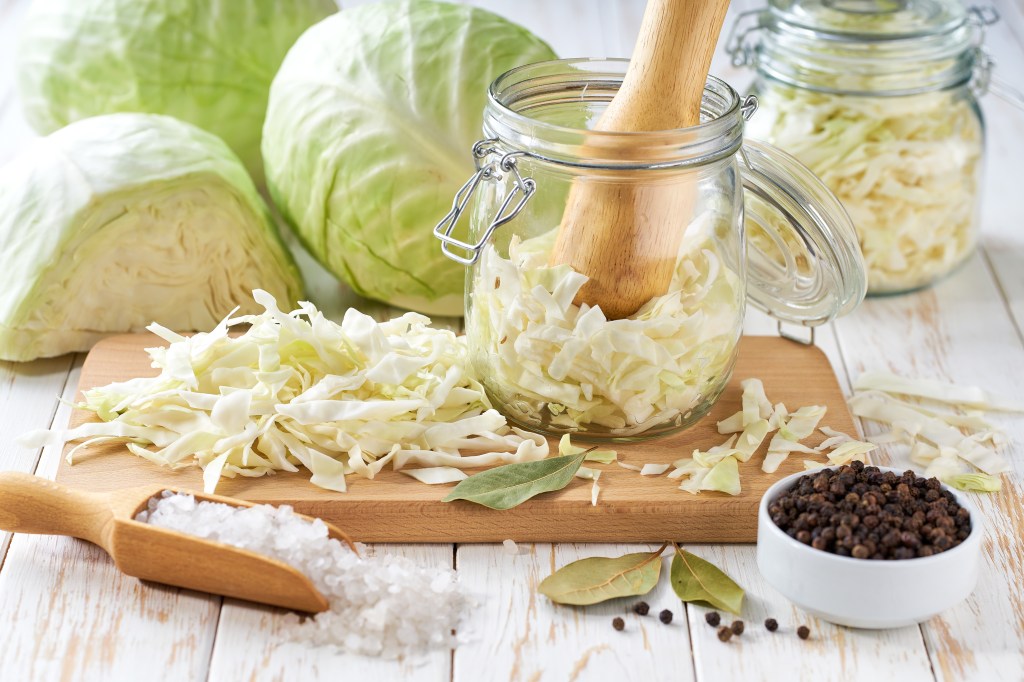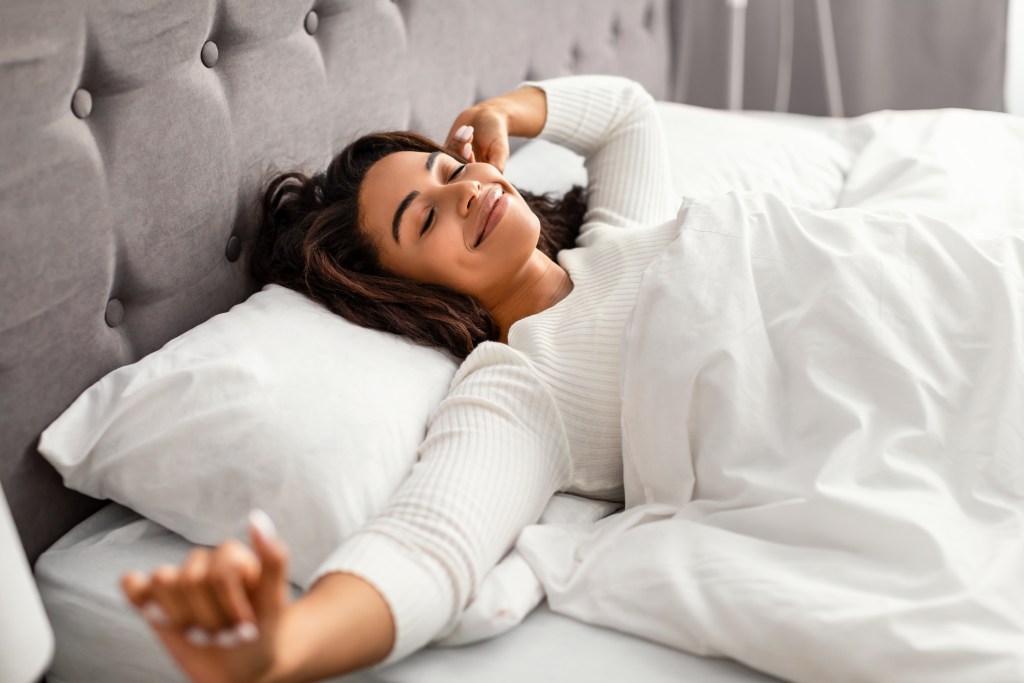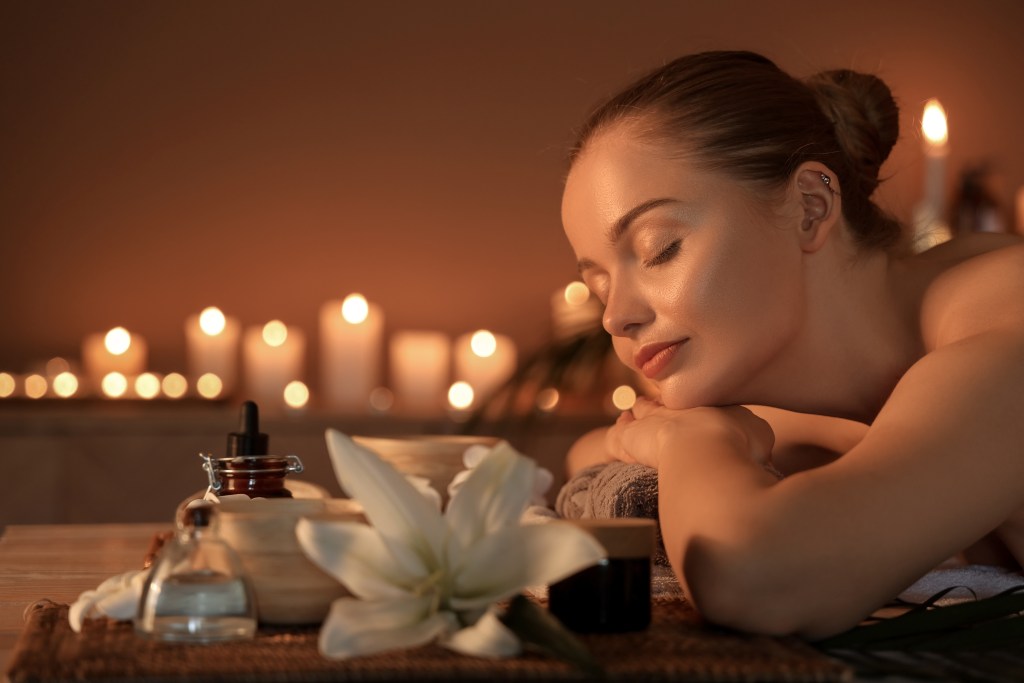At a glance
Restful sleep is essential for overall health, and certain foods can enhance your ability to fall asleep and stay asleep as they provide melatonin, minerals, and other compounds that support relaxation and hormonal balance. Incorporating foods that help you sleep and understanding how lifestyle habits affect your circadian rhythm can significantly improve sleep quality.
It’s well known that a good night’s sleep is essential for overall health and well-being, but did you know that the foods you eat can significantly affect your sleep patterns?
Discover six nutrient-dense foods that help you sleep and learn practical lifestyle tips to create a bedtime routine that promotes relaxation and restful nights.
Why quality sleep matters
Sleep is a critical biological process that impacts every aspect of your health.
During sleep, your body repairs tissue damage, strengthens immune function, consolidates memories, and regulates essential hormones that control everything from your appetite to your mood.
According to research published in the Journal of Clinical Sleep Medicine, insufficient sleep and untreated sleep disorders are detrimental to health, well-being, and public safety.1
The researchers note, “Chronic insufficient sleep is associated with an increased risk of mortality and contributes to both the individual risk and societal burden associated with several medical epidemics, including cardiovascular disease, diabetes, obesity, and cancer.”
Watch the video below to learn about five foods that can promote better sleep.
The role of melatonin in sleep
Melatonin is a primary hormone responsible for regulating the body’s sleep-wake cycles, which is essential to achieve restful and restorative sleep.
Released by the pineal gland in response to darkness, melatonin promotes sleepiness by stimulating physiological processes conducive to sleep, such as lowering core body temperature and relaxing the nervous system.
In addition to its sleep-promoting functions, melatonin also possesses antioxidant properties that help combat oxidative stress and support cellular repair processes during sleep.
However, several factors can delay or inhibit melatonin release, leading to sleep disturbances, difficulty falling asleep, and poor sleep quality.
These factors include exposure to artificial light at night, irregular eating habits, alcohol, nicotine, caffeine, an unhealthy diet, and high levels of stress.

6 foods that help you sleep
Certain foods can significantly impact your ability to fall asleep and stay asleep throughout the night by offering nutrients that promote relaxation and hormonal balance.
Here are six foods that can help achieve restful and restorative sleep naturally.
1. Tart cherries
Tart cherries are a natural source of melatonin, and drinking eight ounces of unsweetened tart cherry juice before bed has been found to support better sleep.
A study published in the European Journal of Nutrition observed “significant increases in time in bed, total sleep time, and sleep efficiency with cherry juice supplementation.”2
Additionally, tart cherry juice contains anthocyanins, potent antioxidant compounds with anti-inflammatory properties that may help promote uninterrupted and restful sleep.
2. Fatty fish
Fatty fish such as salmon, trout, and tuna are rich sources of omega-3 fatty acids and vitamin D, which are critical in regulating the production of serotonin, which is a direct precursor to melatonin.
In addition, omega-3 fatty acids can help reduce inflammation and promote better brain function, which in turn supports improved sleep quality by enhancing sleep-regulating processes.

3. Kefir
While drinking warm milk before bed is often associated with better sleep, kefir may offer greater benefits. Kefir is a fermented milk drink rich in probiotics, which are beneficial bacteria that promote gut health.
“Kefir isn’t just an excellent source of probiotics but also contains compounds that enhance sleep by lowering cortisol, the body’s primary stress hormone, and supporting melatonin production,” Dr. Berg explains.
According to research published in Open Life Sciences, probiotics such as those found in kefir, including Bifidobacterium and Lactobacillus, “have demonstrated potential in ameliorating gut dysbiosis and enhancing sleep quality.”3
4. Avocados
Avocados contain high concentrations of magnesium and potassium, two essential minerals that play a key role in relaxing the nervous system, which is vital for inducing and maintaining restful sleep.
Additionally, avocados are packed with monounsaturated fats, which help stabilize blood sugar levels and may prevent nighttime hormonal imbalances that might disrupt sleep.

5. Sauerkraut
Raw sauerkraut is a rich source of probiotic bacterial strains, which help balance gut health and reduce stress hormones, thereby supporting better sleep quality.
Sauerkraut is also one of the highest sources of vitamin C, which aids in reducing inflammation and promoting overall sleep quality by calming the nervous system.
6. Kiwis
Kiwi fruit isn’t only delicious but also packed with vitamins C and E, serotonin, and folate.
Research published in the Asia Pacific Journal of Clinical Nutrition suggests that eating two kiwis an hour before bedtime can help you fall asleep faster and stay asleep longer.4

More tips to improve your sleep
Understanding the mechanisms of sleep and making beneficial dietary and lifestyle adjustments can greatly improve your sleep quality, helping you wake up feeling refreshed and rejuvenated.
Here are five practical tips to promote healthy sleep.
1. Avoid sugary foods before bedtime
Consuming sugary foods and drinks before bed can negatively impact sleep quality and disrupt sleep patterns.
High sugar intake raises blood glucose levels, prompting insulin release in order to regulate blood sugar balance. This can cause a sharp drop in blood sugar during the night, leading to hunger sensations that may contribute to restlessness.
Additionally, excessive sugar intake can trigger the release of cortisol, which directly interferes with melatonin’s sleep-inducing effects. This can make it harder to fall asleep or cause early waking, leaving you feeling tired and groggy.
2. Incorporate plenty of essential nutrients
Proper nutrition is essential for achieving restful sleep. Key nutrients, including vitamins D and K2, along with zinc, play a crucial role in regulating hormonal balance, supporting melatonin production, and promoting muscle relaxation.
Electrolytes, such as potassium, magnesium, and calcium, are also vital for a good night’s sleep. These minerals aid in muscle relaxation, regulate nervous system functions, and help stabilize sleep-related hormones.
This explains why nutritional deficiencies can result in sleep issues such as restlessness, insomnia, or restless leg syndrome, all of which can disrupt sleep.
To ensure you obtain essential nutrients, focus on incorporating minimally processed whole foods such as fatty fish, pasture-raised egg yolks, leafy green vegetables, avocados, almonds, and fermented foods, including kefir and sauerkraut into your diet.
In addition, consider taking high-quality supplements, particularly if you follow a low-carb diet or practice intermittent fasting, as this can deplete electrolytes such as magnesium and potassium.
However, before making any significant changes to your diet or supplement routine, consult your healthcare provider, particularly if you have any underlying health conditions or are taking medications.
3. Avoid overtraining and intense late-night workouts
Regular physical activity supports better sleep, but overtraining or engaging in intense workouts close to bedtime can disrupt your ability to fall asleep.
Vigorous exercise raises cortisol levels, which can suppress melatonin production. It also activates the sympathetic nervous system, leaving the body in a heightened state of alertness, making it harder to wind down and fall asleep.
Instead, plan heavy or high-intensity workouts earlier in the day. Opt for light activities such as walking or gentle stretching in the evening to promote relaxation without overstimulating your nervous system.

4. Incorporate stress management techniques
Chronic stress elevates cortisol levels, interfering with melatonin production and disrupting sleep cycles.
Incorporate stress-reduction practices such as deep breathing exercises, stretching techniques, or progressive muscle relaxation (PMR) to help activate the parasympathetic nervous system and prepare your body for sleep.
These methods are also effective for those looking into how to lower cortisol naturally.
5. Practice proper sleep hygiene
Your circadian rhythm, often referred to as the body’s internal clock, is a natural 24-hour cycle that regulates sleep, wakefulness, and other physiological processes such as body temperature, digestion, and appetite.
This internal clock is controlled by the suprachiasmatic nucleus (SCN), a cluster of neurons in the hypothalamus that responds to environmental cues such as light and temperature.
Creating a sleep-friendly environment and maintaining a consistent sleep routine can help align your circadian rhythm and improve sleep quality.
To promote melatonin production, keep your bedroom dark with blackout curtains or an eye mask. It’s also recommended to keep the room temperature between 60 and 67° F (15 to 19°C), to support the natural drop in core body temperature necessary for sleep.
To avoid the detrimental effects of blue light on sleep quality, remove screens and electronic devices from your bedroom or turn them off at least an hour before bed.
Additionally, aim to expose yourself to morning sunlight soon after waking to help regulate your internal clock. This practice enhances sleep quality and positively influences mood, alertness, and overall health.
Key takeaways
- Consuming foods that help you sleep, such as tart cherries, kiwis, avocados, kefir, sauerkraut, and fatty fish, can support relaxation and sleep-hormone regulation.
- Key nutrients, including magnesium, potassium, calcium, and melatonin, play an important role in promoting restful sleep.
- Avoiding sugary foods, practicing good sleep hygiene, and managing stress can further enhance sleep quality.
- Prioritizing nutritious whole foods while avoiding overtraining or late-night workouts helps maintain consistent sleep patterns linked to overall health and well-being.
FAQ
1. What is the best food to eat to fall asleep?
Foods and beverages rich in tryptophan, magnesium, potassium, calcium, and melatonin, such as tart cherry juice, kefir, and chamomile tea, are excellent choices to help you fall asleep.
These options promote the production of sleep-regulating hormones and relax the body for a restful night’s sleep.
2. What foods are high in melatonin?
Foods high in melatonin include tart cherries, walnuts, almonds, and fatty fish like salmon and trout. Regularly consuming these foods can boost melatonin levels and improve sleep quality.
3. What is the best food to eat at night?
Eating late at night isn’t recommended as it triggers digestive processes, which can interfere with sleep and lead to discomfort. However, incorporating sleep-enhancing foods such as almonds, sauerkraut, or a cup of kefir with dinner is an excellent strategy to promote a good night’s sleep.
4. What drink is good for sleep?
Drinking tart cherry juice or kefir in the evening is an excellent way to promote sleep. These drinks contain compounds that promote relaxation and increase melatonin levels, helping you fall asleep faster and improve sleep quality.
5. Should I eat if I can’t sleep?
No, eating late at night is generally not recommended, as it can disrupt your metabolism and interfere with quality sleep.
However, if hunger is keeping you awake, consider very light, nutrient-dense options such as a small serving of sauerkraut or a few sips of kefir. These foods provide sleep-supporting nutrients without overstimulating your digestive system.
6. Does turkey make you sleepy?
Turkey contains tryptophan, which can increase melatonin and serotonin levels, thereby promoting sleepiness.
However, it’s typically the high-carbohydrate foods that are traditionally served with turkey that lead to post-meal drowsiness commonly experienced during festive occasions.
Sources
- https://jcsm.aasm.org/doi/10.5664/jcsm.9476 ?
- https://link.springer.com/article/10.1007/s00394-011-0263-7 ?
- https://pmc.ncbi.nlm.nih.gov/articles/PMC11260001/ ?
- https://pubmed.ncbi.nlm.nih.gov/21669584/ ?
















